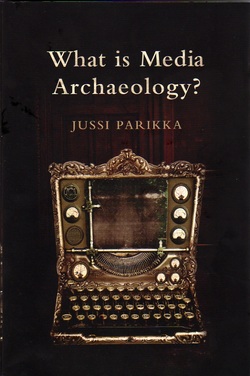
Parikka is a Finnish scholar who currently teaches at the University of Southampton. My impression from this perhaps understandably Eurocentric book is that “media archaeology” is a much larger field than he currently envisions. I didn’t find any specific references to writers’ uses of technology in any of the chapters, although clearly inventions such as paper, the alphabet, moveable type, the fountain pen, the typewriter, the tape recorder, the Selectric typewriter, the word processor, the phototypesetter, the modem, the internet, e-books and search engines have altered how and what writers can write as well their conceptions of collaboration, intellectual property, originality and what it means culturally to be a literary practitioner. In 1984 when Fred Wah and I put the world’s first electronic literary magazine, SwiftCurrent, on-line and invited writers to participate we encountered established writers who were unable to type, poets worried that their ideas might be stolen, fiction writers horrified that we intended to do no editing, a surprisingly large proportion of
 RSS Feed
RSS Feed